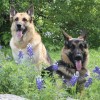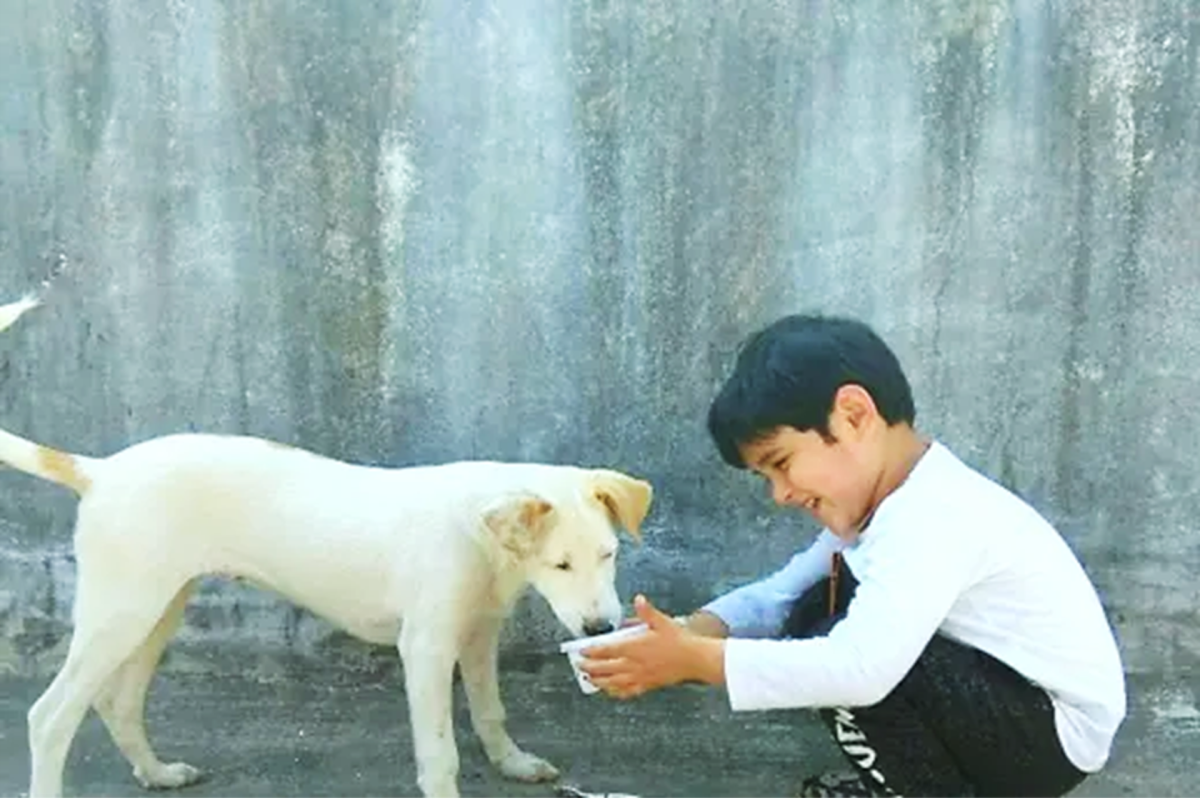How to train a puppy the first few months
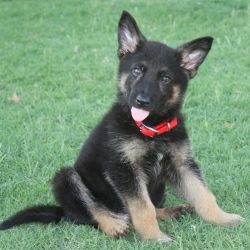
Puppy Care Takes Dedication & is rewarding
Puppies are so lovable
and SO challenging.
The first few months of puppy training in your home is critical. A well trained puppy is such a delight and will grow into a great companion.
Here are the puppy training tips that I have learned after many puppies, reading many articles, reading books, talking to others, observing others and making my own mistakes.
Make no mistake training a puppy is work. Having a plan will ensure your success. Without a plan you are subjecting your home to easily being dominated by your new puppy which can make you frustrated and your puppy anxious.
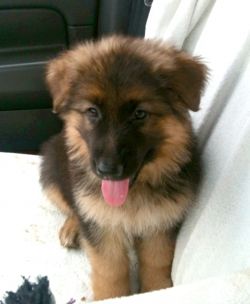
Bringing A New Puppy Home
It is to your benefit and will keep you sane to puppy-proof your home and yard before bringing your puppy home.
Establish where eating and drinking will take place. If this is your first puppy get your food and bowls in advance.
Create a toy box, basket, corner or whatever works in your home to keep the dog toys contained.
Get loads of puppy treats. I break them into pieces. They are just as effective in small broken pieces. They last longer, and hey it is cheaper!
Have a bed ready for sleep time. I use a cardboard box, a large one, for about 6 weeks at night. I put carpet or an old blanket in the bottom and a couple of toys or chew items.
If using a crate/kennel during the day then put it in a central location where the puppy can see and hear what is going on around the home.
Walk around and find everything a crawling and/or walking baby would find AND put it away. I put all shoes in closets until the puppy has learned there are things it can bite and others it cannot bite.
I block off most of the house by closed doors or dog gates at the beginning. You want a safe environment for your puppy. You also want an environment that lends itself to productive training.
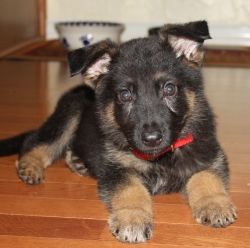
Go to the Veterinarian
Go to the vet within the first 48 hours. I got one puppy who seemed perfectly fine but by the next morning that puppy HAD to go to the animal clinic. The poor puppy had many ailments.
There are health problems that are not always visible. You also want your vet to know your new puppy from the very beginning for the best future care.
10 important things
- Housebreaking
- Chewing / Biting
- Sit
- Stay
- Come
- Kennel / Crate training
- Walking on a leash
- Lay Down
- Consistency
- Routine
Potty training using a bell
Of course this is NOT necessary to housebreak a puppy. I did not use the bell for half of my dogs. I only adopted this because I wanted to have a signal I could hear from another room. I also want you, my reader, to see me actually training. Coco and I accomplished this after 3 weeks in my home when she was almost 12 weeks. You will not see the bell by the door until the end of the video.
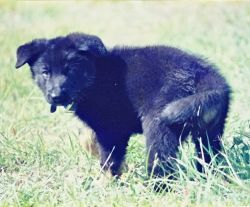
Train a Puppy to Potty
It is the first big hurdle with a puppy. I use the command "Do your business". I am always so happy to get this accomplished. It is ALL about vigilance to your puppy's signals and needs.
In the video above Coco did most of the signs or signals of needing to go outside to potty. They can include sniffing around the floor, whining, looking up to you, burst of running or excitement, standing at the door or any door, and pawing the door.
Training will go much quicker if you are constantly observing your puppy for any of these signs. Then quickly scoop them up and head outside. Every time you make it outside use the same location then that becomes the familiar spot and smell for relieving themselves. Having a calm and normal tone is also very important. This is a natural activity so use your natural voice for all parts of housebreaking. This means using a normal tone when there is an accident, when it is time to hurry out and even when they have done well by going outside. It is all matter of fact.
Puppy Potty Training
Here is my regimen. It is not for everybody so adapt it to your personality. It is not easy at the beginning but it works quicker than other methods. After many puppies I now am able to housebreak them in under 6 weeks. I walk around the house sleep-deprived repeating "Only __ more weeks, only ___ more weeks"
Puppies can easily pee every 2 hours so I take them out every 2 hours. I would rather go out for nothing than have them pee inside.
Even though I go out every 2 hours, I still vigilantly watch their behavior for the tell-tell signs: sniffing, excitement, running around smelling, whining, sitting in front of me, sitting at any door, circling and some others you will learn specific to your puppy. When puppies get excited they pee. When they get nervous they pee. I am on constant alert.
I take away their water at night BUT I still get up and take them out every 3 hours for first 3 or 4 weeks (depending on their age). I stretch it to every 4 hours after about 13 weeks
Always go out after these:
A nap
In the morning very first thing
Before bed
When they get out of the crate
After eating or drinking
and After playing.It is important to get them outside quickly after or during an accident in hopes of finishing outside so you can praise them. Remember a normal voice tone. Use your chosen words for pottying and be sure to use the word 'outside' as you head out. I just keep towels and clean-up spray in the central living area. Remember it is not permanent. You want to clean it up quickly so the scent will not linger there.
Chew Toys for Biting
If you do not want your puppy to chew your things or injury itself then provide things which can be chewed. It always seems to take a few months to break a puppy from biting things it is not supposed to bite. I am always on alert. I feel like I say 'no biting' all day.
It wasn't until my 5th puppy that I truly accomplished the 'no biting' with terrific results. I am proud to report that THAT puppy which is now grown up has NEVER chewed up or destroyed one thing.
Immediacy is crucial. I am ALWAYS ready with a toy to offer the very instant the puppy goes to bite something it should not bite. I have finally trained my family to always have a toy or chew toy in hand when around the brand new puppy. They chew for many reasons. Place your focus on offering them something acceptable to chew right away when you say 'no biting'.
Toys are always on hand so they can quickly learn what they CAN bite
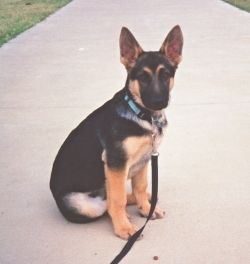
Sit
My Hand Signal is both hands in fist at my chest (like a scared child)
The two easiest ways to teach sit is when you are feeding them or letting them out of their crate. From the beginning each time I place the food bowl down or fill it I say "sit" then assist them to the "sit" position. Then I say "stay" and gentle put my hand between them and the bowl to hold them in a "stay". If they get up I gently push their bottom back down to a sit and repeat "sit" and "stay".
After some practice I move my hand and say "thank you" so they can now have the food. It is okay if they do not seem to be getting the commands just keep repeating the motions. If you keep doing this every time you feed learning the "sit" command will happen fairly quickly.
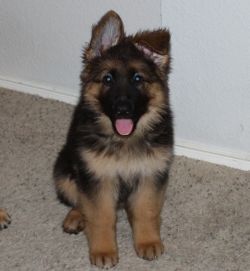
Stay
My Hand Signal is the old-fashion Stop with one hand
I start using this word immediately. I help my puppy slowly understand "stay" in many different situations. Once the puppy is in a sit or laying position I then use the "stay" command. I use my hand to gently hold them in a "stay" position or to put them back in a "stay".
I do this over and over again with a normal tone of voice. Once the stay is accomplished even if only for 3 seconds I release the puppy and say "Good Stay".
I practice stay every time I put food out because I have their full attention, every time before I let them out of the crate, during walks, and a number of times during the day for treats. Start with short time spans like seconds and work up to minutes.
Then work your up to moving around the room and even leaving the room. I always take the time to gently put the puppy back in the same spot if they get up before released from the stay. Also, I do not reward for a partial stay but instead I try again for a shorter time. Do not reward a behavior you do not want.
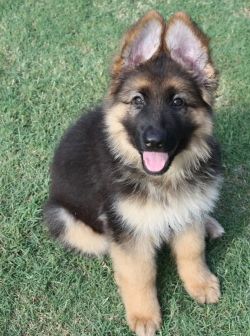
Command their attention
Not the other way around
If you do not have or get their attention it is more difficult to have them follow a command. I started using hand signals a number of years ago. I strongly suggest hand signals for at least the 4 basic commands.
I use hand signals and verbal commands from the very beginning. I want them looking up at me and paying attention to me. I alternate verbal commands with hand signals along the way.
I like being able to give them a hand signal without a verbal command as they grow larger. You can make your own up or use mine.
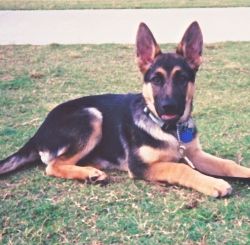
Lay Down
My Hand Signal is a pointing finger motioning down to the floor
I always have treats close by or in my pocket. Puppies are usually quite eager to please. This command I practice a few times during the day and reward with treats.
It is always humorous when the puppy gets the hang of it and promptly lays down before the command to get the treat. Practice when the puppy seems bored and is being destructive because it refocuses their energy and gives them a mission. Get the treat!
Important
I learned from experience the word "Okay" should have no meaning to your puppy or dogs. It is so easy to say "okay" as a release from a "stay". I quickly realized how much we all use the word "Okay" even without thinking about it. I have firmly adopted using the command "your free" as the release command from "stay".
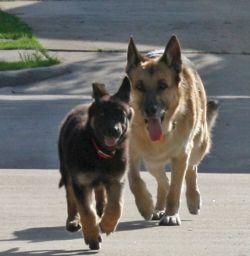
Come
My Hand Signal is a open hand sticking out then moving up to my chest
I will confess it took me a few puppies to really get my dogs to obey this command. This one takes constant practice everyday. I alternate treats and affectionate praise for coming when commanded.
You do not realize how necessary this command is until you need it for safety or other immediate reasons.
I never use this command if the result has any type of negative for the puppy, in the eyes of the puppy. For example: to take away something (even if they are not supposed to have it) or to make them be in a place they are reluctant to be like the crate (you want good feelings about the crate). I try to make "come" as fun and as pleasant as possible at the very beginning.
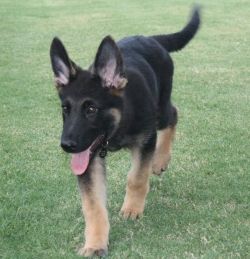
Follow
A simple dog command but very handy
This command may not be for everybody but I use this command in many ways. I start saying "follow" right away and the great thing is most puppies do follow out of curiosity. I reward with treats and praise and say "good follow".
When it comes time to walk on a leash this really helps limit the times the puppy may pull back or resist the leash. It lets them know what is expected when on the leash and the command 'follow' is already familiar.
I use "follow" around the house so I can keep an eye on the puppy without having to carry it or try to lure it to come with me all the time. I use "follow" the most out in the yard because I have a large space.
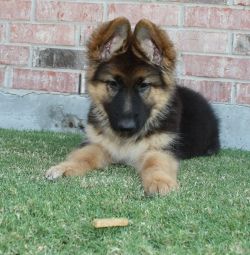
Leave it
No Hand Signal but I do snap (or clap)
This is by far the most used command I teach my dogs. It works for EVERYTHING. And if you ever need to have a dog-sitter it will work for them as well. I start saying this whenever the puppy is into something I do not want them doing. Easy examples are the trash, my flowerbeds, the toilet, our shoes, an open cabinet, or whatever it is they are smelling, biting, or pawing.
I say "leave it" and then assist them in "leaving it" by removing the item form their mouth or by moving them from the place. As they show understanding of what I mean with "leave it" then I begin using tempting items. In the picture you see a treat as the temptation while in a stay I say "leave it". I think it is good practice to reward with a different treat than the tempting treat. As puppy gets better then move on to being on a leash and walking by something tempting and trying to command "leave it". The leash allows you to give a gentle tug if they go for it. Keep working on it until you do not need to tug when giving the "leave it" command. And, finally try without a leash.
I am continually amazed at how often I say leave it and how it is so effective. I even use this when they are chewing on themselves.
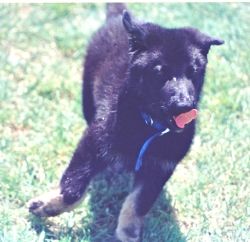
Abundant Energy
A dog that gets exercise is a well behaved dog. That is my mantra around here. This is where training your puppy to walk on a leash will be very useful. I start walking my puppy as soon as it gets comfortable with the leash. Even if we only go around the block that is exercise.
I start by putting the leash on and letting them smell it and bite it so they get acquainted with it being attached. I will then pick it up and try to walk a few steps. I drop the leash or walk toward the puppy to make the leash slack if the puppy pulls backward or pulls away. This is where the command 'follow' can be very useful.
I continue to do this in small increments to build up the amount of time the puppy is willing to walk along with me holding the leash and not pull back. It is not long before we are headed around the block. I also teach all of my dogs to fetch for exercise and for my sanity. Practicing commands can even burn some energy.
Puppy video - Wanting to be where the kids are
The kids are always wanting to shoot basketballs from the back of the truck. The step stool is really for the trampoline but the dogs were very entertaining using it so I had to video it.
Coco says follow me OR - You can ALWAYS try it your way
Bones for chewing
Info on bones
I do give my puppies rawhide chews. I love finding femur bovine bones. I ask the butcher if there are any femur bones in the freezer. I ask them to cut the bones no smaller than 1.5 inches across and not much longer than 2 inches along the smooth shaft. The bone marrow in the middle is terrific for growing puppies (or dogs).
I keep them in the freezer until I give them this treat and I take the bones away when they stop chewing or licking them to put them in the fridge for a later time. I like these specific bones because they do not chip or break off bone fragments which can be very dangerous if swallowed.
They are also great because you can keep them and recycle them. I make new toys out of them or just throw them in the toy basket plain. They make great hockey pucks on hard floors which is another great exercise for a puppy. Beware they hurt like heck when you step on them without a shoe.
Always, always say your puppy's name before every command.
Whenever you say 'no'
After you say 'no' about anything offer an immediate substitute activity which they can do.
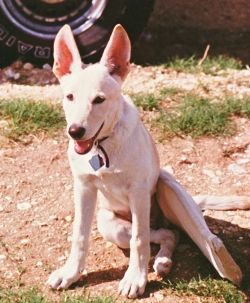
Hard Lesson learned
Visualize the future
Do not let your puppy, even though they are cute and little, do anything you do not want them doing when they are grown. My first puppy in my college days chased squirrels. I thought nothing of it since I lived by big open fields and she always came right back. One day she ran out into a busy 3 lane street after a dead squirrel.
There are many things I do not allow my puppies to do because when they get bigger and/or older it is not going to be a good or safe behavior.
The 'No-nos'
Don't let the puppy do it so the grown up won't do it.
Here are some I have learned. You will make your own list since every dog owner allows different manners for their pets and every pet is different in size. I know at a minimum your puppy's safety is important.
Jumping up to say hello
Biting you when they get excited
Putting their paws up on things
Jumping on laundry and biting while you're folding it
Eating people food which suddenly mattered with my 2nd puppy when he nipped my 3 year old niece (who promptly cried) to get a cracker from her
Fetching sticks-- if you have wood furniture it is hard for a puppy to distinguish - my rocking chair got gnawed a bunch with my first puppy
Running out the front door without a leash
Chasing cats
Drinking from the toilet
In Honor of my best Shepherd to date
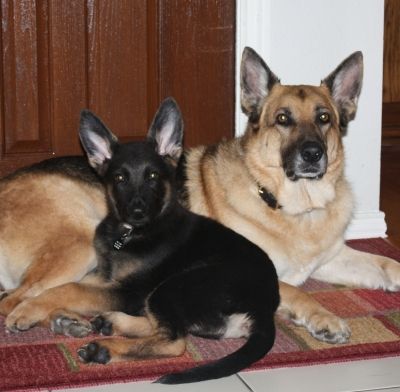
Puppy items you may need

Respect NOTE:
All the text and photos in this article are the creation and property of the author, unless otherwise noted. Thanks for respecting intellectual and image copyright laws and principles.
All photos in this article, are the exclusive property of Coolaunt. Please do not copy or reproduce these photos in any way without written permission from Coolaunt.
Still working on keeping the little one's attention
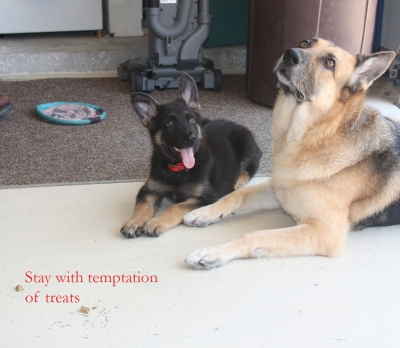
Leave a brief word or two & take the poll, please.
